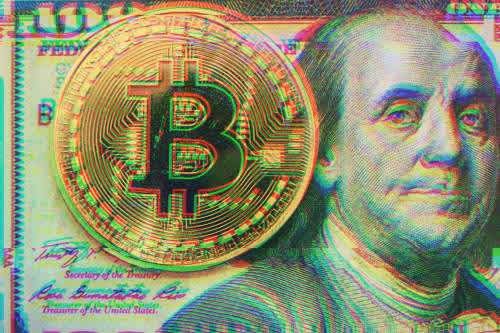A lot of ink has been spilt in the name of NFTs over the past 6 months. With that in mind, you’d think the average tech aficionado would by now understand what an NFT is, what its potential use cases are, the technology it’s based on… and why it’s such a stupid concept.
My guess is that this fog of war is purposeful: tech journalists cannot outright dismiss a new trend while there is so much excitement surrounding it. That’s doubly true when personalities such as Jack Dorsey and Michael Jordan are fabricating so much excitement around it. So they write a long article, bury their explanations under technicalities, and we’re none the wiser.
I, however, don’t have to sugar-coat anything. I’m also not paid by the word. In fact, as a technology consultant, I’ve turned explaining new concepts concisely into a career. Let’s see if I can succinctly prove how silly this new tech is in less than 2,000 words.
...
A quick definition
In case you don’t know what a Non-Fungible Token is, here is a quick recap: it’s an identifier (a token) that represents the deed to a digital piece of media. Unlike currencies like the Dollar, the token cannot be copied or divided into smaller parts, which is what makes it “non-fungible”. To make sure ownership records are always correct and up to date, they are stored on thousands of computers throughout the world (the blockchain). That way, no one can fake ownership of the asset. In order to make the token unique and impossible to copy, computers on the blockchain have to create and solve incredibly difficult mathematical puzzles. There’s not much else to it.
1. Fake scarcity
A few months ago, I made a little graph for one of my articles. And because it’s mine, I turned it into an NFT. That means that I verifiably own its deed. The blockchain says so.
There’s a snag, though: there’s absolutely nothing I can do about you seeing the picture for free, or copying and sharing it. Try as I might explain that the picture has become scarce because its ownership is now unique as defined by a token, it does not give it much more value. Furthermore, nothing is stopping you from creating your own NFT of the very same picture by copy-pasting it. Why, then, would you buy it, or any other?
You could argue that buying such an asset COULD have some worth because you’d be able to copyright it, sell it, alter it, and make sure you receive a fee whenever its likeness is used. But there’s a snag…
2. No copyrights for you
An NFT is not a piece of content itself, it is merely a code defining ownership, which often simply points to a URL. An NFT purchaser might assume that he purchased the underlying content that is associated with the NFT; however, in reality, the original creator is still the copyright owner, and retains the exclusive right to copy, distribute, modify, publicly perform, and publicly display said content.
Additionally, NFTs are not backed up by any new or special digital laws at this time. I’d have few legal recourses, beyond the already existing copyright laws, should someone take my graph and use it.
We may thus ask ourselves… how is this technology in any way “innovative” for content creators?
3. Commodification of Culture
Right now, and as explained above, NFTs do not corrupt one of the internet's core principle: free(ish) access to digital assets. Not yet, at least.
Their existence is however a step in that direction, and we should condemn it wholeheartedly. Sure, for now, anyone can still view content purchased as an NFT. But this may be only temporary if the commonly agreed rules were to change. It may have already begun: the video “Charlie Bit My Finger”, a staple of early internet culture, is being sold as an NFT, and will then be deleted off of Youtube. The person who buys it might put it back there for all to enjoy… or not.
If we do not take a stand for our common digital culture, it’s just a matter of time before swathes of the internet become private collections inaccessible to all but a few privileged friends and donors.
4. Digitalising real life
Beyond the appropriation of internet culture, NFTs can also represent real-world assets, such as houses, cars, or… moments in time? In an extreme interpretation of what NFTs can be, the NBA’s new venture, Top Shot, is selling Moments from games in the form of GIFs.
There is nothing wrong with merging the digital and the physical to a point, but we can’t go down a slippery slope where the continued digitalisation and tokenisation of our lives allows us to monetise more and more aspects of it, including MOMENTS IN TIME. That way lies madness.
The technology is very versatile, and there are very few things you wouldn’t be able to sell as an NFT (again, it’s just digitally claiming the rights to something and selling that claim). And that’s exactly what could become worrying in the long term.
5. No real use cases for the technology
We’ve already gone this far into the rabbit hole, so let’s be honest with ourselves: we’re not talking about the Next Big Thing here. It’s been a decade since the first blockchain was invented, and not a single app that you, your friends or your co-workers use regularly relies on that technology. By contrast, when the web was the same age that bitcoin is today, it had half a billion users around the world.
What does that make NFTs? Beyond smart contracting use cases which are yet to materialise, they’re only good as flimsy “stores of value”, within which bored millionaires can dump their crypto-gains. It’s not like they can use them anywhere else.
And, as described earlier, that value only exists as long as everyone is dancing to the music. For anyone paying attention, though, it’s clear the song has already reached its last verse.
6. Long-term ownership is impossible
For a store of value to have any worth in the future, which is its sole purpose, the method of storage used needs to work long enough for the asset to appreciate.
This isn’t an issue for wines, cars, houses paintings… But how old is the average NFT platform? 6 months? 2 years? How long will they be in business before their founders take a job at Goldman Sachs? And what happens to NFTs when their business does fold, as is the way of so many such start-ups?
For those paying attention, most of the start-ups and platforms used to sell NFTs today are no more innovative than any random website selling posters. The house of cards is shaking, and when it comes tumbling down, there will be nothing left of that “store of value”, other than a fun 404 error page.
7. NFTs have too many technical issues
Even if the companies themselves manage to survive for more than a decade, their systems often still depend on the old-fashioned pre-blockchain internet, wherein a token might suddenly vanish if someone forgets to renew a domain name.
In fact, the technology is so badly put together that Most NFTs don’t really permanently live on a blockchain. That would require too much energy. The content and metadata that an NFT represents are stored separately from the NFT smart contract itself. And that content is definitely not well protected.
Furthermore, digital files require power to access and maintain and are incredibly unstable over time as new operating systems, plugins and standards render things unviewable - often within a year. It’d be a miracle if 50% of NFTs survive past 2025.
8. NFTs are expensive to make and buy
Despite big democratisation talks, creating an NFT isn’t cheap. You have to “mint” it (put them on the blockchain), which costs a noticeable amount because of the “gas fee”, which is the amount you give the person whose computer is solving cryptographic puzzles. Solving these puzzles takes a lot of energy, which in turn can create astronomically high electricity bills. It’s only fair then, that this person be rewarded.
But the gas fee costs tend to be hidden during transactions. And they’re not small. I spent 50$ to make the NFT I created for research purposes. It set its price for 1.99$, but purchasing will also set you back 100$ in gas fees. When all is said and done, I get 2$ cents for my asset, and the crypto-millionaires who run the network get 150$. So much for decentralisation.
Speaking of…
9. NFTs are not actually decentralised
Most of the marketing surrounding NFTs is based on the claim that such technologies do away with third parties, allowing sellers to interact directly with each other.
But guess who handled the sale of the largest ever NFT auction a few months ago, and took a $6M cut in the process? Christie’s, a 300-year-old company owned by French multi-billionaire Francois-Henri Pinault, also owns the Kering luxury group (Gucci, Balenciagga, YSL…).
Furthermore, the key concepts behind blockchains (Proof of work and/or Proof of stake) largely benefit the people who have the most power over said blockchain.
Add to all this the fact that 70% of the crypto supply necessary to purchase NFTs is mined in China, and we don’t get a really decentralised picture, do we?
10. Impending climate disaster
As explained earlier, to receive financial rewards, miners who create blocks within a blockchain have to solve complex puzzles, which require a lot of processing power, and thus a lot of electricity (often from burning coal in countries like China). And they have to do it faster than their peers.
This energy-intensive network competition is called the “proof of work”. Proof of work, in essence, is a way to confirm that computational effort has been expended by “the prover” (the system doing a task). It’s just how blockchains work. The more a computer “works” (the more energy is expended / the more coal is burnt), the more competitive it is.
This computational arms race essentially rewards the participants able to burn the most coal.
This is the price of an NFT: a bit of cultural value on top of hundreds of acres of forest burnt to make electricity to create the fancy puzzles enabling the technology.
...
NFTs don’t work. The concepts behind them make little sense practically and philosophically, they have no legal backing, they don’t live up to the marketed hype, and their costs are prohibitive, both economically and ecologically.
And the only reason people put up with them over the past year is that they had nothing better to do. It’s no surprise that the amount of attention paid to NFTs exploded during the pandemic, and not when the technology was introduced to the wider public in 2017: bored people had nowhere else to put their money while they were sheltering home.
As the economy reopens, we are seeing the price of most NFTs being cut in half, if not more. Coincidence? I think not.


